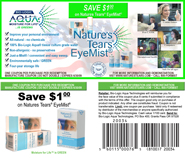
Dry Eye
What is Dry Eye Syndrome?
- Dry eye is the #1 reason for United States eye doctor visits.
- Dry eye can cause stress, loss of productivity, fatigue, impaired vision and blindness.
Dry eye syndrome is also called: "Dry eye," "dry eyes," "dry eye disease." Medical name: Keratoconjunctivitis sicca or Keratitis sicca.
Definition: "Dry eye" is a symptom complex affecting the water content of the eye's protective "tear film," which should be 98 to 99 percent water. Dry eye symptoms occur when the eyes produce too little tears or poor quality tears, or when environmental or health factors cause the tear film's natural water content to evaporate faster than it can be replaced.
Dry eye symptoms, including discomfort such as stinging or burning of the eyes, may be subtle, unnoticed and transient; or persistent, debilitating, painful and vision threatening, as in chronic post-Lasik dry eye.
Dry eye symptoms are currently the #1 complaint among patients visiting eye doctors in the United States. Worldwide, the incidence and severity of dry eye syndrome is increasing, due in part to increases in dry air and polluted air.
Many common causes of mild or transient dry eye are either preventable, or treatable through lifestyle changes. For more serious dry eye, there numerous medical treatments in addition to lifestyle changes, are also available.
Related articles and sources
Defining Dry Eye (11-28-11, Bio-Logic Aqua Research)









